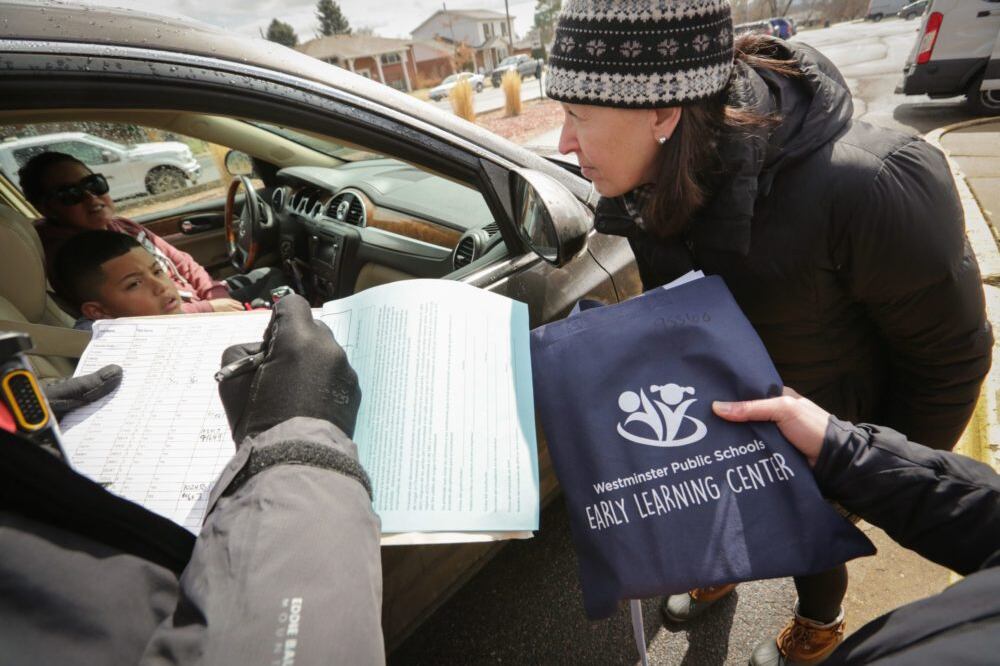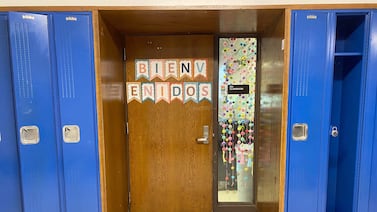Colorado’s K-12 schools and higher education institutions will get nearly $1 billion in additional federal money to offset costs associated with coronavirus response.
Gov. Jared Polis on Monday issued an executive order describing how the state plans to distribute $1.67 billion from the federal coronavirus relief bill to local governments and other institutions. The distribution includes a combined $510 million for K-12 and $450 million for public higher education institutions.
This aid is in addition to $121 million for K-12 education and $173 million for public and private higher education institutions distributed directly by the federal government.
The announcement comes as the legislature’s Joint Budget Committee works to make $3.3 billion in cuts to finalize the 2020-21 state budget, amid the economic fallout from the coronavirus crisis. The committee is scheduled to take up the education budget on Tuesday, with committee members considering cuts of roughly 5% to K-12 schools and around 7-8% to higher education. Many other state departments have suffered larger reductions.
Money from the federal relief bill, formally known as the CARES Act, is separate from the state budget process and doesn’t spare lawmakers from having to make these cuts, but it does relieve some pressure.
“It doesn’t solve our budget problems,” said state Sen. Rachel Zenzinger, an Arvada Democrat and member of the Joint Budget Committee. “It does soften the blow for some things.”
Amie Baca-Oehlert, president of the Colorado Education Association, the state’s largest teachers union, had been calling for lawmakers not to cut education. She praised the governor’s decision.
“Districts were planning to make draconian budget cuts, and this money will help cushion the blow to keep educators in their jobs and keep students learning,” she said in a statement.
Republican lawmakers said Polis should not have acted unilaterally to spend so much money when the legislature is in the midst of agonizing decisions.
“For the governor to announce this allocation of funds — without so much as consulting the chief budgeting body — is not only a lapse in leadership but has now eliminated the people’s voice over how their money is spent,” State Sen. Bob Rankin, a Carbondale Republican and member of the budget committee, said in a statement. “To say that I’m disappointed would be putting it lightly. How do we build a budget around the whims of one man with no deliberative process?”
Polis gave lawmakers $70 million of the $1.67 billion for bills related to the state’s coronavirus response.
In addition to the money for school districts, Polis set aside $37 million for what’s expected to be a large increase in the number of students in poverty. Because Colorado gives school districts more money for each student who qualifies for free lunch, an increase in poverty driven by widespread job losses is expected to add more than $70 million to the base cost of educating students next year.
Members of Democratic leadership said additional federal relief is still needed.
“The CARES Act funding is an indispensable lifeline for our state, helping us ease the immediate economic and public health pains caused by COVID-19. But it’s nowhere near enough in terms of recovery,” Senate President Leroy Garcia said in a statement. “As members of the legislature, we will continue working hard alongside the Governor and the Joint Budget Committee to protect Coloradans during this challenging time. However we need Congress to do much more, especially for those communities like mine in Pueblo that the CARES Act explicitly left behind.”
Many smaller Colorado communities did not get their own allocations through the CARES Act. Polis plans to send $275 million of Colorado’s allocation to these local governments.
The governor’s office linked education money to the state’s economic recovery, saying that school districts need additional resources to open safely in the fall so that parents can return to work and that colleges and universities need financial support to help students stay in school, complete their degrees, and join the workforce.
In an executive order describing the allocations, Polis said school districts can use their share of the money to make up for lost learning during extended school closures, offer more instructional hours, facilitate remote learning, and make needed changes to allow for social distancing within school buildings. School districts will share $500 million, with additional money going to the state Charter School Institute and the Colorado School for the Deaf and the Blind. The state’s 21 rural educational cooperatives will also get $25,000 each.
Institutions of higher education that accept this federal money must commit not to raise tuition by more than 3% or seek a waiver from that requirement, Polis said in his executive order. Colorado’s public colleges and universities have raised tuition repeatedly in recent decades to make up for losses in state revenue. Bracing for declining enrollment and unsure of what school will look like in the fall, many colleges fear students and their families won’t tolerate additional increases, but administrators also don’t have many other revenue sources to tap if state aid decreases.
The state distribution also includes $85 million to pay wages to state employees in public safety, health care, public health and human services who are working on coronavirus-related response; $48 million for medical and public health expenses incurred by the state and local agencies; and $10 million for emergency rent and mortgage assistance.








